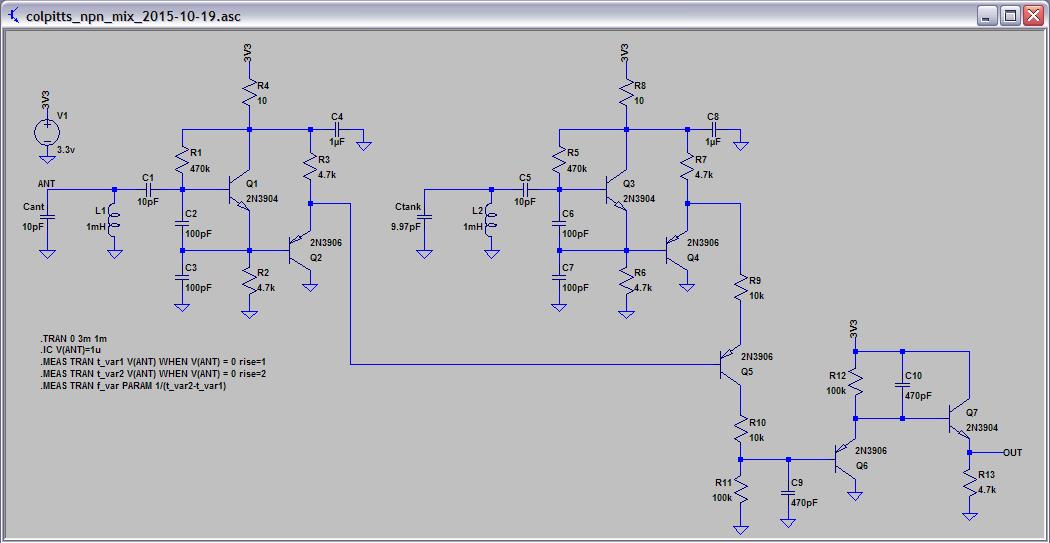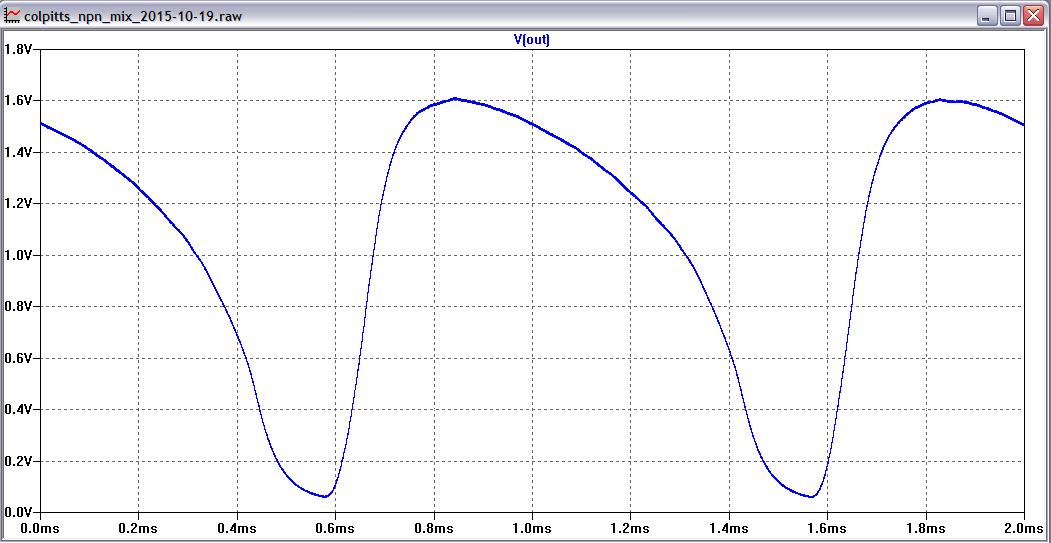OK so lets take this Spice simulation to its musical conclusion. When I see a waveform like this, my immediate thought is what will it sound like as a musical instrument, not just a waveform. Dewster created a sound file which gives you a most rudimentary idea of the timbre. In this case a bit "buzzy" maybe but I could do with even more harmonic complexity. But from just that 2 seconds it's hard to tell much.
I now have to ask what would this waveform really sound like in a more theremin-like environment? So I downloaded the .MP3 - converted it back to .WAV (better to have started with the .WAV but that won't really make much difference here). I then edited the file to get a single note from it as the original cycles over the two seconds so I wanted to clip out a piece that might be used as a single tone.
Then I imported that into the Kontakt Sampler and created a .nki sound sample file from it that I could play on a keyboard - the sampler takes care of this for me - reassigning to correct pitches as I play. I changed the ADSR envelope of the sample to have a much slower attack that is more appropriate for a theremin. Changed the decay and release a bit too to be more in line with what I would expect a theremin to use.
Then I loaded up the sound in Cubase as a Kontakt plugin on a MIDI file I played in on the keyboard. In this case the melody to Orlando Gibbons "The Silver Swan". I had the lute MIDI accompaniment already input from my accompaniments project. Then I took the sample and added a bit of digital delay to it with a Waves plugin. Then added little vibrato on it from another digital plug in I have for that and finally added some reverb of various sorts. So I tried to process it as I might a theremin (other than the slight simulated vibrato which I could have done better in other ways).
Finally I assigned a lute sample I have to the accompaniment MIDI part and recorded the result.
Now of course this does not sound exactly like a theremin. I could have assigned portamento to it and created a more natural perfomance with that, but this was just a quick test. I think it gives a reasonable idea of what this waveform might sound like in a musical setting.
https://soundcloud.com/rk53-1/theremin-waveform-test-1-silver-swan
So Splice simulation is fine for seeing what waveforms might result, but the "proof of the pudding" must be in the musical output and how that might conceptually sound as played on a theremin. Interesting little experiment.




